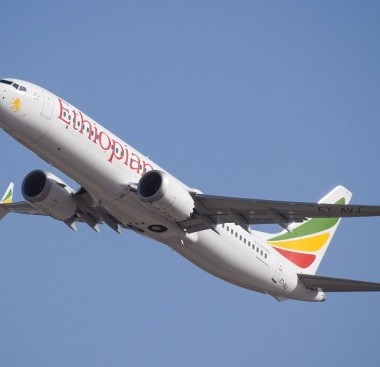Western sanctions, Houthi attacks boost appeal of Russia’s Arctic sea route
Russia’s first oil shipment of the year is traveling through the nation’s Northern Sea Route to China, with more vessels expected to follow suit.
The 2,500-mile shipping route, which traverses waters off the Siberian tundra, is typically only used during summer months when ice conditions are less severe. But Western sanctions and Houthi drone attacks in the Red Sea have boosted its appeal as the shortest passage between ports in Russia and China.
Last year, the waterway saw a record 36 million tons of cargo pass through, of which more than half was super-chilled liquefied natural gas, according to Rosatom, a Russian energy company that also operates the Northern Sea Route.

While journeys can still prove onerous, particularly if ships need icebreaker assistance, ongoing attacks by Yemen’s Houthis in the Red Sea have made the route a safer choice. More Russian tankers may opt to use the Northern Sea Route in a bid to avoid the violence and get their cargoes to buyers more quickly.
Shturman Ovtsyn is the first oil tanker to make use of the passage this year and is already over halfway through its journey. The voyage is unusual for this small tanker, which usually hauls cargoes from Gazprom Neft’s Arctic Gates terminal on the Ob Gulf to the port of Murmansk.
In late June it loaded a cargo as normal, but headed east instead of west when it entered the Kara Sea and is making its way to Rizhao, a Chinese port north of Shanghai, where, like many other Russian tankers, it may undergo maintenance as well as drop off its load.
Three tankers owned by Russian tanker group Sovcomflot are due to arrive in Murmansk before the end of the month. The NS Arctic and SCF Baltica both traversed the NSR last year and, once loaded, it’s likely they will head to China via Russia’s northern coast. For the SCF Baikal, the NSR would be new territory.
Another two, also owned by Sovcomflot, are heading from China to the Bering Strait and will make the westward journey to Murmansk. The LNG-fueled tankers Korolev Prospect and Vernadsky Prospect are due to be delivered this year on a 10-year charter to the Sakhalin 2 project.
Before taking up their roles, both vessels need to be upgraded with a bow loading system and modification of their bunkering equipment. They may be headed to a Murmansk shipyard for that work and could then carry cargoes back to China before taking up their new jobs.
Similar Stories

AMBPR completes sale of first five ship repair robots to Damen Shiprepair Dunkerque
View Article
Expert workshop discusses IMO “mid-term” GHG reduction measures
View Article
Ports of Indiana celebrates first new dock in 20 years; $6 million berth to serve ocean vessels at Lake Michigan port
View Article
CMA CGM Announcement: PCS (Port Congestion Surcharge) from North Europe to Algeria
View Article
DNV celebrates advances in ship autonomy
View ArticleAnother dark fleet ship set to dock at Russian Arctic LNG Plant
A vessel in Russia’s suspected dark fleet is preparing to dock at the nation’s newest liquefied natural gas facility, as Moscow continues to attempt to push forward with exports despite…
View ArticleGet the most up-to-date trending news!
SubscribeIndustry updates and weekly newsletter direct to your inbox!





